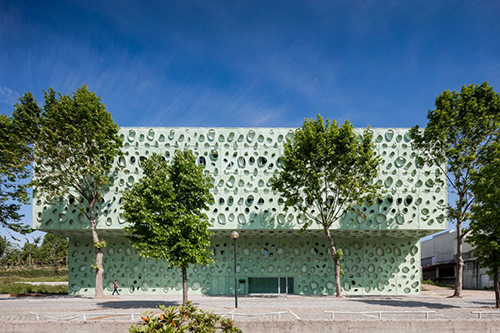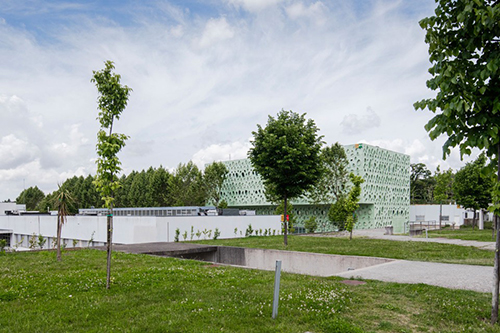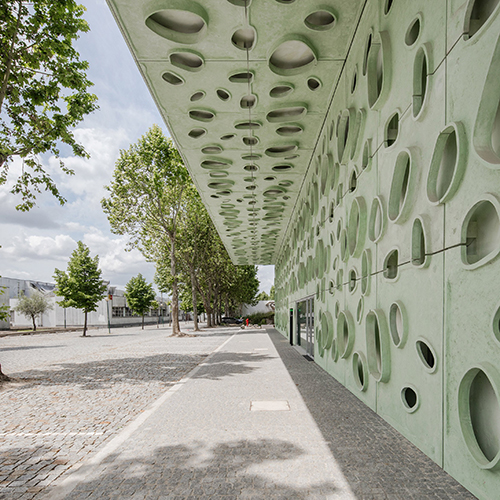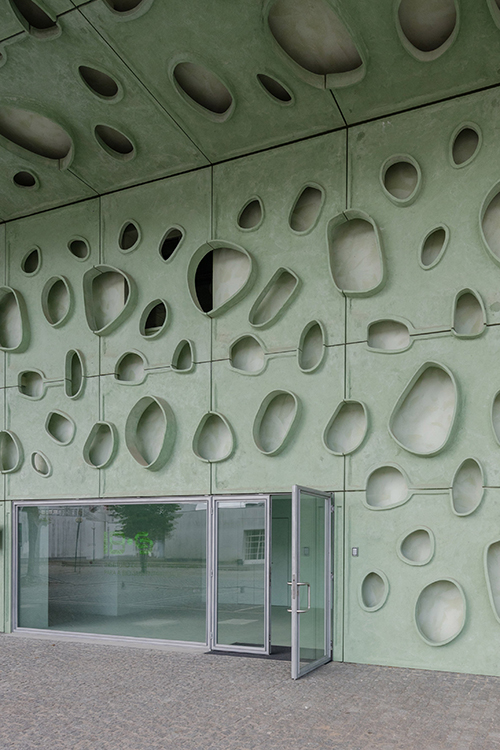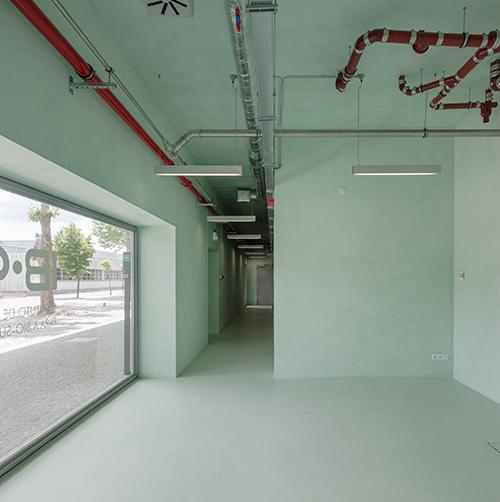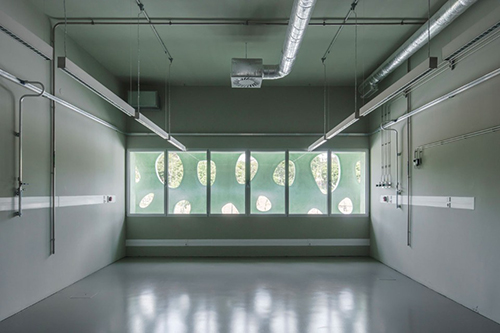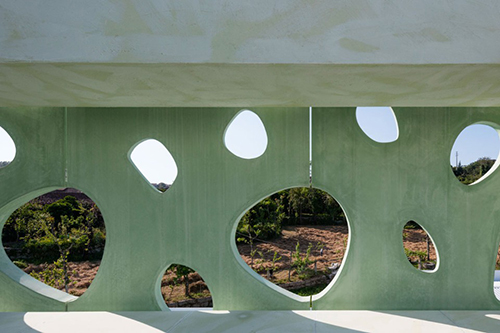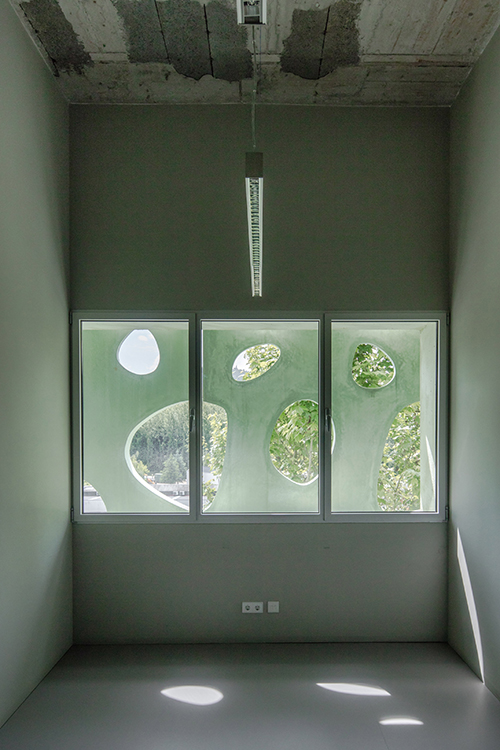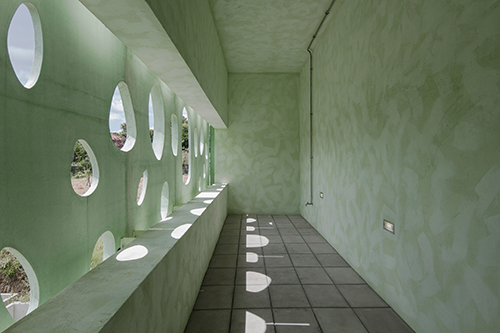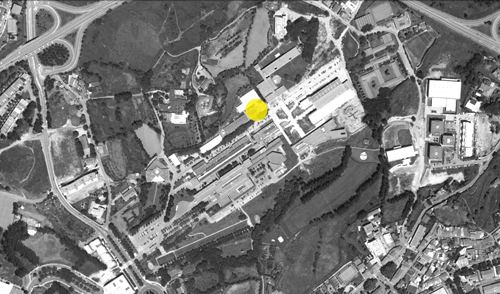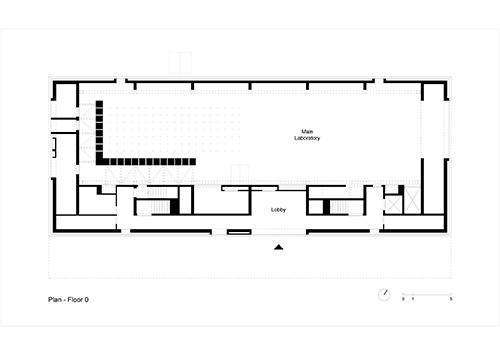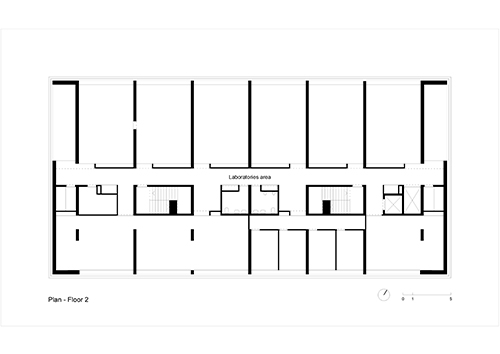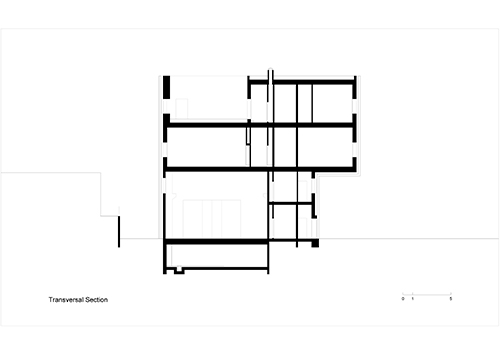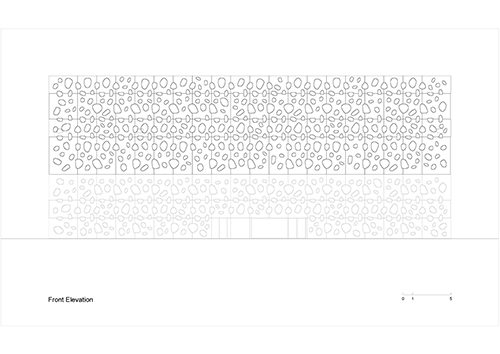IBS
IBS – Institute of Science and Innovation for Bio-Sustainability 1st prize
We propose a building with a unique image for the campus. A building that breaks the existing grey monotony – referring not only about the pictorial issue of the Campus, but also about the “global crisis without end” – and that, at the same time, is able to captivate.
The search for future technology themes, was the genesis of the selected image for the building.
The facade skin, happened through an architectural reinterpretation, it retracts the symbolic power of the ERI purpose.
We used as reference the titanium nanotubes.
Associated with recent discoveries, the titanium nanotubes have, among others, capacities for reuse and cheap production, becoming, this way, an inspiration for an architecture that seeks sustainability as an ideal.
Nowadays, at the offices of UM (Minho University), researching processes are occuring in what concerns to materials development, one possible example is what’s happening in the civil engineering laboratory.
In order to develop common synergies, we propose the skin of the building in prefabricated elements of a cementitious matrix material.
This material reinforced with micro-fibers, has no conventional reinforcement, which could cause corrosion problems, among other features, is a very ductile material, plastic, fluid, self-compatible and allows to control the crack and therefore doesn’t crack. This skin allows the inclusion of pigmentation/oxides doesn’t need constant maintenance and lasts longer than common materials. To finish, it also allows a wide range of the architectural freedom.
Project: IBS – Institute of Science and Innovation for Bio-Sustainability
Location: Minho University, Azurém Campus, Guimarães, Portugal
Date: 2010 to 2015
Client: Minho University
Architecture: Cláudio Vilarinho
Collaborators: Carine Pimenta, Catarina Campos, João Pereira de Sousa, Nieves Valle, Pedro Resende
3ds: Gil Soares
Engineering: Isabel Teles (structure), João Cunha (waters), António Pelaez (termic/energy), Susana Sousa (acoustic), Fernando Ferreira (electricity), Carlos Mirra (security plan)
Specifications, measurements and budgets: DIMSCALE
Photos: João Morgado

